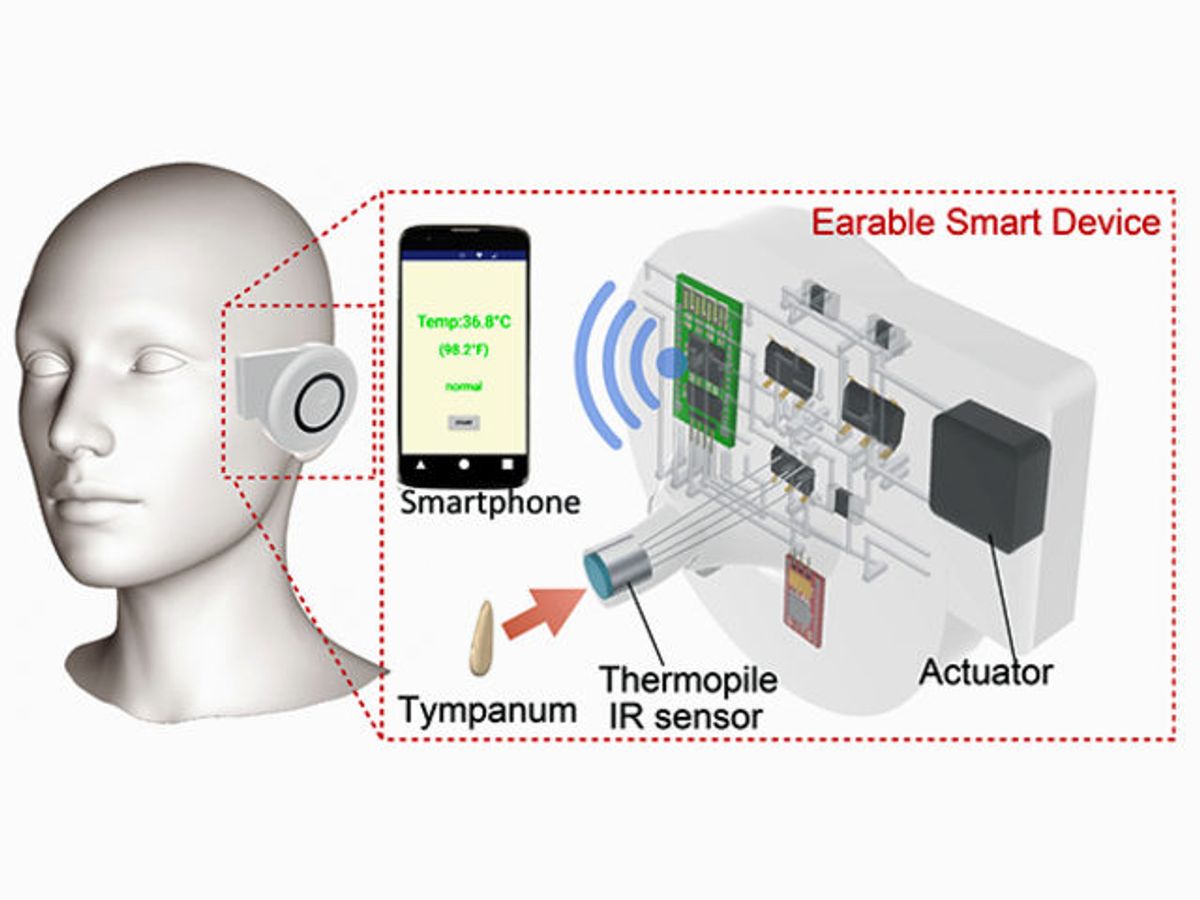Fitness-tracking wristbands and bracelets have mostly been used to count steps and monitor heart rate and vital signs. Now engineers have made a 3D-printed sensor that can be worn on the ear to continuously track core body temperature for fitness and medical needs.
The “earable” also serves as a hearing aid. And it could be a platform for sensing several other vital signs, says University of California Berkeley electrical engineering and computer science professor Ali Javey.
Core body temperature is a basic indicator of health issues such as fever, insomnia, fatigue, metabolic functionality, and depression. Measuring it continuously is critical for infants, elderly and those with severe conditions, says Javey. But wearable sensors available today in the form of wristbands and soft patches monitor skin temperature, which can change with the environment and is usually different from body temperature.
Body temperature can be measured using invasive oral or rectal readings. Ear thermometers measure infrared energy emitted from the eardrum and are easier to use than more invasive devices. That’s the route Javey and his colleagues took for their earable sensor, reported in the journal ACS Sensors.
For a customized fit to an individual’s ear, the team printed their sensor using flexible materials and a 3D printer. First they printed a gauzy, disc-shaped base using a stretchable polymer. This base contains tiny channels into which the researchers inject liquid metal to make electrical interconnects in lieu of metal wires. It also has grooves for an infrared sensor; microprocessors; and a Bluetooth module that transmits temperature readings to a smartphone app. They packaged the gadget in a 3D-printed case.
Because the device covers the ear, it could affect hearing, Javey says. So the engineers also embedded a bone-conduction hearing aid, made of a microphone; data-processing circuitry; a potentiometer for adjusting volume; and an actuator. The actuator sits by the temple and converts sound to vibrations, which are transmitted through the skull bone to the inner ear.
The earable accurately measured the core body temperature of volunteers wearing it in rooms heated or cooled to various temperatures, and while exercising on a stationary bicycle.
“It can be worn continuously for around 12 hours without recharging,” he says. “In the future, power can be further reduced by using lower power electronic components, including the Bluetooth module.”
The researchers plan to increase the device’s functionality by integrating sensors for measuring EEG, heart rate, and blood oxygen level. They also plan to test it in various environments.
Prachi Patel is a freelance journalist based in Pittsburgh. She writes about energy, biotechnology, materials science, nanotechnology, and computing.



